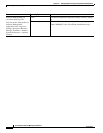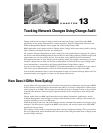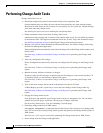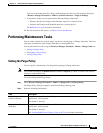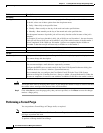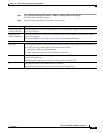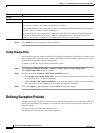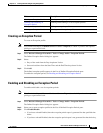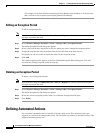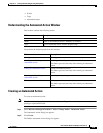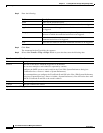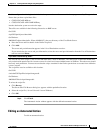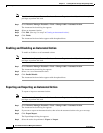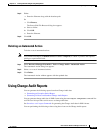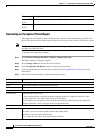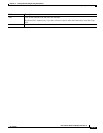
13-8
User Guide for Resource Manager Essentials 4.1
OL-11714-01
Chapter 13 Tracking Network Changes Using Change Audit
Defining Automated Actions
For example: If you have disabled exception period for Monday from 10:00 am to 12:30 pm, then
there will not be any exception period report generated for Monday.
Editing an Exception Period
To edit an exception profile:
Note View Permission Report (Common Services > Server > Reports) to check if you have the required
privileges to perform this task.
Step 1 Select Resource Manager Essentials > Tools > Change Audit > Exception Periods.
The Define Exception Period dialog box appears.
Step 2 Select a day from the Day drop-down list box for which you want to change the exception period.
Step 3 Change the start and end times in the Start Time and the End Time drop-down list box.
If required you can also enable or disable the status for the exception period.
Step 4 Click Add.
The edited exception profile appears in the List of Defined Exception Period dialog box. This will
overwrite the existing exception profile for that day.
Deleting an Exception Period
To delete a set of Exceptions Periods:
Note View Permission Report (Common Services > Server > Reports) to check if you have the required
privileges to perform this task.
Step 1 Select Resource Manager Essentials > Tools > Change Audit > Exception Periods.
The Define Exception Period dialog box appears.
Step 2 Select one or more exception profiles in the List of defined Exception Periods pane.
Step 3 Click Delete.
Defining Automated Actions
You can define automated actions on creation of change audit record. This automated action gets
triggered on creation of the change audit record. You can define any number of automated actions. The
supported automated actions are:



